Whetten David A., Cameron Kim S. Developing management skills
Подождите немного. Документ загружается.

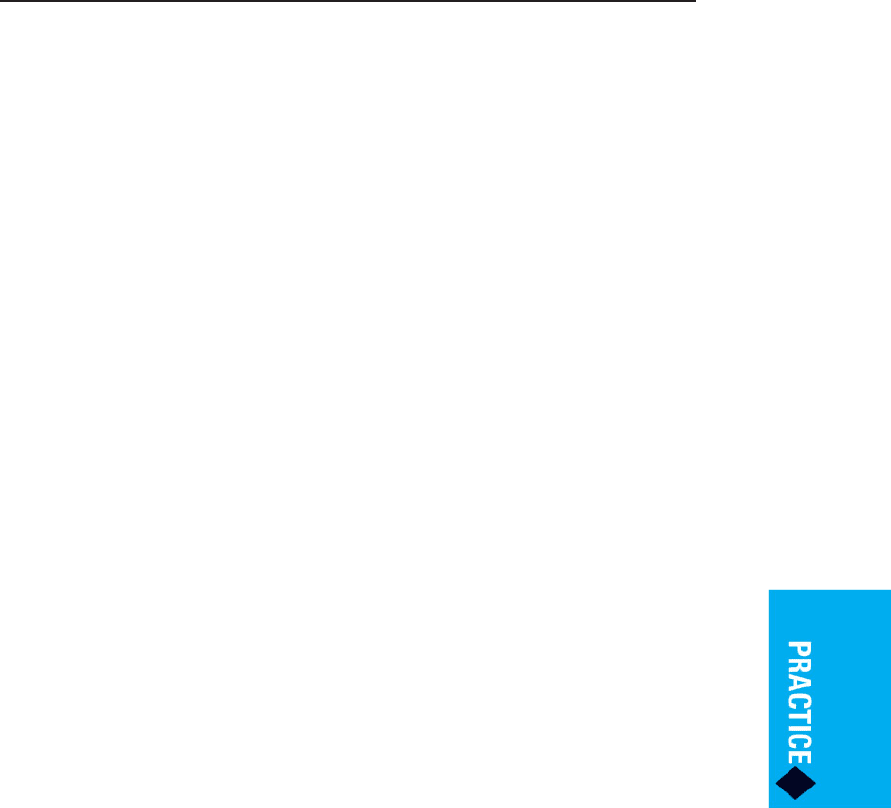
Observer’s Feedback Form
R
ATING
1 = Low
5 = High
Strategy
_________ 1. Identified the general and specific purposes.
__________ 2. Tailored the message to the audience’s needs, attitudes, knowledge
level, and so forth.
__________ 3. Met the expectations of the audience by using appropriate language
and style.
Structure
__________ 4. Began with a forecast of the main ideas and captivated the audience’s
interest by giving them an important reason to listen.
__________ 5. Chose an appropriate organizational structure; for example, moved
from familiar to unfamiliar and simple to complex.
__________ 6. Used transitions, including internal summaries, to signal progress.
__________ 7. Concluded on a high note; reinforced major points; summarized key
actions.
Support
__________ 8. Used a variety of supporting information, examples, and so forth, to
increase the credibility and understanding of major points.
__________ 9. Used supporting material (both the content and format of evidence
and illustrations) appropriate for the audience.
__________ 10. Used effective, simple visual aids to enhance comprehension and
retention of the message.
Style in Oral Communication
__________ 11. Used notes to create a conversational style.
__________ 12. Presentation had obviously been well-rehearsed, including the use of
visual aids, and so forth.
__________ 13. Conveyed controlled enthusiasm for the subject through the tone of
voice, posture, and facial expressions.
__________ 14. Engaged the audience through effective eye contact, physical
arrangement of the room, and appropriate gestures.
MAKING ORAL AND WRITTEN PRESENTATIONS SUPPLEMENT A 617
618 SUPPLEMENT A MAKING ORAL AND WRITTEN PRESENTATIONS
Style in Written Communication
__________ 15. Document was mechanically precise; that is, it contained no errors
that detracted from the message.
__________ 16. Document was factually precise; that is, the content was accurate.
__________ 17. The choice of words communicated the message clearly and
unambiguously.
__________ 18. The tone matched the topic and the audience (e.g., formality,
emotion, directness).
__________ 19. Used the appropriate format for the type of correspondence.
Supplement: Questions and Answers
__________ 20. Handled questions and challenges thoughtfully, candidly, and
assertively.
__________ 21. Responded to objections in an orderly manner; for example,
restated the objection, restated your position, offered further
support for your position, and explained the significance of your
rebuttal.
__________ 22. Maintained control of the meeting by balancing the demands of
specific individuals with the interests of the group and keeping the
discussion focused on the issues.
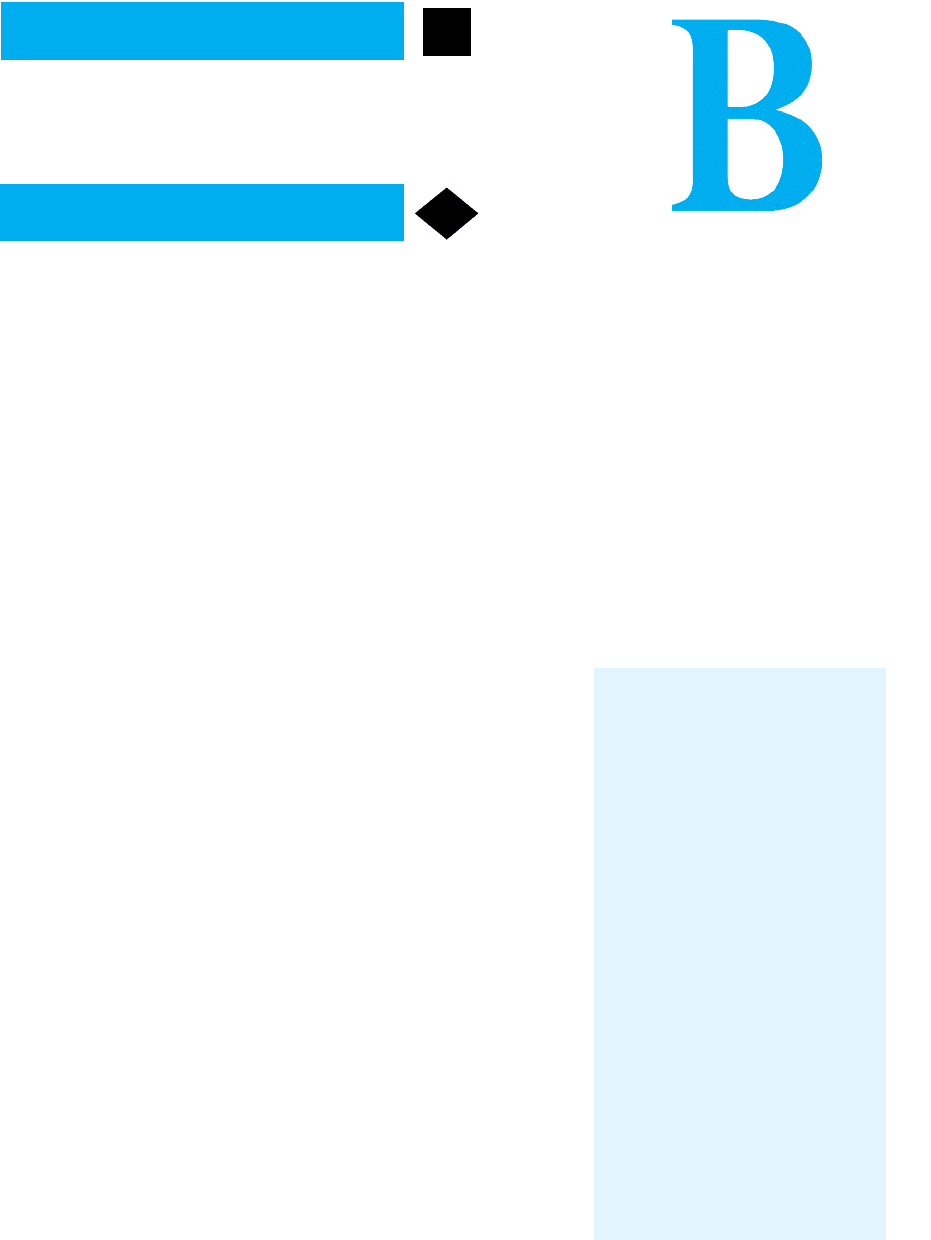
SKILL
LEARNING
■ Planning and Conducting Interviews
■ Specific Types of Organizational Interviews
■ Summary and Behavioral Guidelines
SKILL
PRACTICE
■ Evaluating the New Employee-Orientation Program
■ Performance Appraisal Interview with Chris Jakobsen
■ Employment-Selection Interview at
Smith Farley Insurance
Conducting
Interviews
SKILL
DEVELOPMENT
OBJECTIVES
■ ADOPT GENERAL GUIDELINES
FOR EFFECTIVE INTERVIEWS
■ APPLY APPROPRIATE
GUIDELINES FOR
INFORMATION-GATHERING
INTERVIEWS
■ UTILIZE APPROPRIATE
GUIDELINES FOR
EMPLOYMENT-SELECTION
INTERVIEWS
■ IMPLEMENT APPROPRIATE
GUIDELINES FOR
PERFORMANCE-APPRAISAL
INTERVIEWS
619

620 SUPPLEMENT B CONDUCTING INTERVIEWS
SKILL
LEARNING
Planning and Conducting Interviews
Except for conversations, interviews are perhaps the
most frequently occurring form of communication
(Sincoff & Goyer, 1984); they certainly occur regularly
in organizations. Individuals interview to obtain a posi-
tion; they interview to gather information to perform
their jobs; and managers interview subordinates to
review their performance and provide counseling and
coaching.
Interviews are so common they are often taken
for granted. People view interviews as simply conver-
sations during which information is gathered. While
interviews are similar to conversations, there are
important differences. An interview is a specialized
form of communication conducted for a specific task-
related purpose (Downs, Smeyak, & Martin, 1980;
Lopez, 1975). Indeed, one reason why some managers
perform poorly as interviewers is they treat this “pur-
poseful communication” too casually, as though it
were merely a conversation. As a result of poor plan-
ning and lack of attention to managing the interview
process, they fail to accomplish their purpose and often
alienate the interviewee in the process.
These outcomes are illustrated in the following
counseling interview between Joe Van Orden, director
of management services, and Kyle Isenbarger, a man-
agement consultant on his staff (DuBrin, 1981).
JOE: Kyle, I have scheduled this meeting
with you because I want to talk about certain
aspects of your work. My comments are not all
favorable.
KYLE: Since you have formal authority
over me, I guess I don’t have much choice. Go
ahead.
JOE: I’m not a judge reading a verdict to
you. I want your input.
KYLE: But you called the meeting; go
ahead with your complaints. Particularly any
with foundation. I remember once when we
were having lunch you told me you didn’t like
the fact I wore a brown suit with a blue shirt. I
would put that in the category of unfounded.
JOE: I’m glad you brought up appearance.
I think you present a substandard impression
to clients. A consultant is supposed to look
sharp, particularly at the rates we charge
clients. You often present the impression you
cannot afford good clothing. Your pants are
baggy. Your ties are unstylish and often food-
stained.
KYLE: The firm may charge those high
rates, but the money I receive does not allow
me to purchase fancy clothing. Besides, I have
very little interest in trying to dazzle clients
with my clothing. I have heard no complaints
from them.
JOE: Nevertheless, I think your appearance
should be more businesslike. Now, let’s talk
about another concern. A routine audit of your
expense account shows a practice I think is
improper. You charged one client for a Thursday
night dinner for three consecutive weeks, yet
your airline ticket receipt shows you returned
home at three in the afternoon each week. That
kind of behavior is unprofessional. How do you
explain your charges for these phantom
dinners?
KYLE: The flight ticket may say 3
P.M., but
with our unpredictable weather, the flight
could very well be delayed. If I eat at the air-
port, then my wife won’t have to run the risk
of preparing a dinner for me that goes to waste.
Food is very expensive.
JOE: But how can you eat dinner at 3 P.M.
at the airport?
KYLE: I consider any meal after one in the
afternoon to be dinner.
JOE: Okay for now. I want to comment on
your reports to clients. They are much more
careless than they should be. I know you are
capable of more meticulous work. I saw an
article you prepared for publication that was
first-rate and professional. Yet on one report
you misspelled the name of the client com-
pany. That’s unacceptable.
KYLE: A good secretary should have
caught that mistake. Besides, I never claimed I
was able to write perfect reports. There are
only so many hours in the working day to
spend on writing up reports.
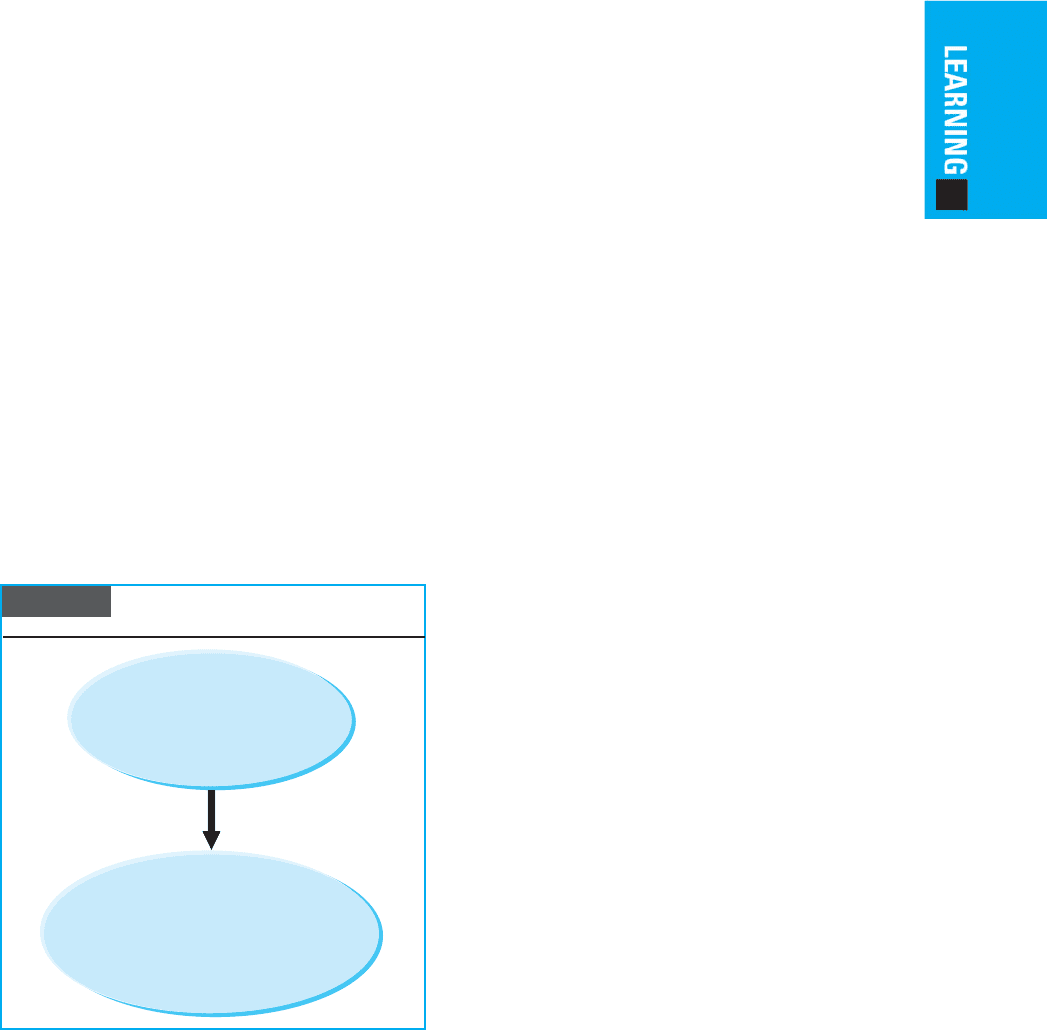
CONDUCTING INTERVIEWS SUPPLEMENT B 621
Effective interviews don’t just happen. Like other
purposeful communication activities, interviews must
be properly planned and executed. To help you become
an effective interviewer, this supplement includes a
series of guidelines, organized according to the schema
shown in Figure B.1. First, we present broad guidelines
for planning and conducting interviews in general.
These guidelines are divided into two steps: planning
the interview and conducting the interview. Following
this discussion, we will give more specific guidelines for
conducting specialized interviews with limited pur-
poses: gathering information, selecting new employees,
and reviewing subordinate performance.
PLANNING THE INTERVIEW
Establish the Purpose and Agenda
As is the case with any kind of planned communica-
tion event, you need to define clearly your purpose for
holding the interview. In an interview, as in an oral
presentation, ask yourself what it is you want to
accomplish. Do you want to gather information?
Persuade? Counsel? Evaluate? Not only do you need
to consider what you want to accomplish in terms of
the content of the interview, you must also consider
the relationship you want to develop with the other
participant. Consider who your interview partner is
and how what you say will affect the already existing
relationship. This resembles the process of adapting
Follow General Guidelines for:
• Planning the interview
• Conducting the interview
Incorporate Specific Guidelines for:
• Information-gathering interview
• Performance-appraisal interview
• Employment-selection interview
Figure B.1
Guidelines for Effective
Interviews
your message to your audience in an oral presentation
but is somewhat easier since there is only one member
in your interview “audience.” Also consider the situa-
tion in which the interview will occur. Are participants
under pressures of deadlines? Can you arrange not to
be interrupted?
Once you’ve determined your purpose, develop
an agenda. Consider what kinds of information you
need to obtain with respect to your purpose. Based on
this, write out a list of topics that need to be covered in
the interview. While these topics do not have to be
listed in any particular order, you may want to priori-
tize them.
Create Good Questions That
Encourage Information Sharing
Questions arise out of your purpose and agenda and
are the fundamental means by which you obtain infor-
mation in an interview. Any interviewer can ask ques-
tions; only well-prepared interviewers ask effective
questions—ones that elicit the information they need.
Make sure the questions are worded clearly and they
ask for the information you want. Adapting to your
interviewee is critical. Phrase your questions in lan-
guage the interviewee can understand and in ways
that will enhance your relationship with that person.
Different types of questions can be used for differ-
ent effects and different types of information-gathering
purposes. Open questions such as, “How is your
work going?” or “How has the new regulation affected
department morale?” elicit general information. Use
open questions when you want to let the interviewee
talk without restriction. They allow interviewees free-
dom to discuss how they feel, what their priorities
are, and how much they know about a topic. Thus,
open questions are useful for developing rapport.
Remembering the answers to open questions is a prob-
lem, particularly if the interviewee talks on and on.
Open questions are also time-consuming, and using
them too often makes it difficult for the interviewer to
control the interview. However, if you are looking for
broad, general information, ask open questions.
If, on the other hand, you need specific informa-
tion, ask closed questions. Closed questions such as,
“Where were you last employed?” or “Would you
rather work on Project A or Project Z?” restrict the pos-
sible answers an interviewee can give. They are appro-
priate when you have limited time or want to clarify a
point made in an answer to an open question. Table B.1
suggests when to use open or closed questions.

622 SUPPLEMENT B CONDUCTING INTERVIEWS
As you plan your questions, pay close attention to
how the questions are worded. Often, an unprepared
interviewer will ask questions that are difficult to
answer or prevent open, honest answers. One
example is the double-barreled question:
❏ If there’s anything that would make you stay,
what would it be?
❏ If you had no choice but to use this system,
how would you use it productively?
❏ Why should we adopt this insurance plan
when none of our competitors has adopted it?
Each of these questions assumes a condition that
the interviewee may not agree with but then calls for
the interviewee to support or defend the condition.
The first question assumes the interviewee is looking
for a reason to stay; the second assumes the system can
be used productively; the third suggests something is
wrong with the plan. Such questions may lead to hypo-
thetical answers that don’t reflect the interviewee’s
honest position.
Another potentially problematic question is the
false bipolar question. A bipolar question offers
the interviewee two choices: “Did you vote yes or no
on the union contract?” This can be a legitimate and
appropriate question. However, suppose you asked this
question: “Do you approve or disapprove of overtime
Table B.1 When to Use Open and Closed Questions
Use open questions when you want to:
• Discover the interviewee’s priorities.
• Discover the interviewee’s frame of reference.
• Let the interviewee talk through his or her opinions without constraints.
• Ascertain the depth of the interviewee’s knowledge.
• Ascertain how articulate the interviewee is.
Use closed questions when you want to:
• Save time, energy, and money.
• Maintain control over the interview situation.
• Obtain very specific information from the interviewee.
• Encourage the interviewee to reconstruct a specific event.
• Encourage a shy person to talk.
• Avoid extensive explanations on the part of the interviewee.
• Clarify a point made in answer to an open question.
Source: Adapted from Downs, Smeyak, & Martin, 1980.
work?” Most people do not totally approve or disapprove
of overtime work; yet this question forces interviewees
to choose from limited, or false, options, neither of
which likely represents their true stand on the issue.
Thus, if you use bipolar questions, make sure the options
you offer are the only two possible options; otherwise,
you will obtain inaccurate information.
A final type of problematic question is the
leading question, in which you let the interviewee
know the answer you want to hear by how you
phrase the question:
❏ Don’t you think using this plan will alleviate
the problems we’ve been having?
❏ Are you in favor of this policy like all your
coworkers?
❏ Of course, you want the best for your family,
don’t you?
It would not take an astute interviewee very long
to figure out what you wanted to hear, and so you are
likely to get biased responses. Leading questions can be
useful when a biased answer is intended and desired.
For instance, the question “Of course you want the
best for your family, don’t you?” would be useful in
a sales interview if the interviewer tries to persuade a
potential buyer to buy a set of encyclopedias. However,
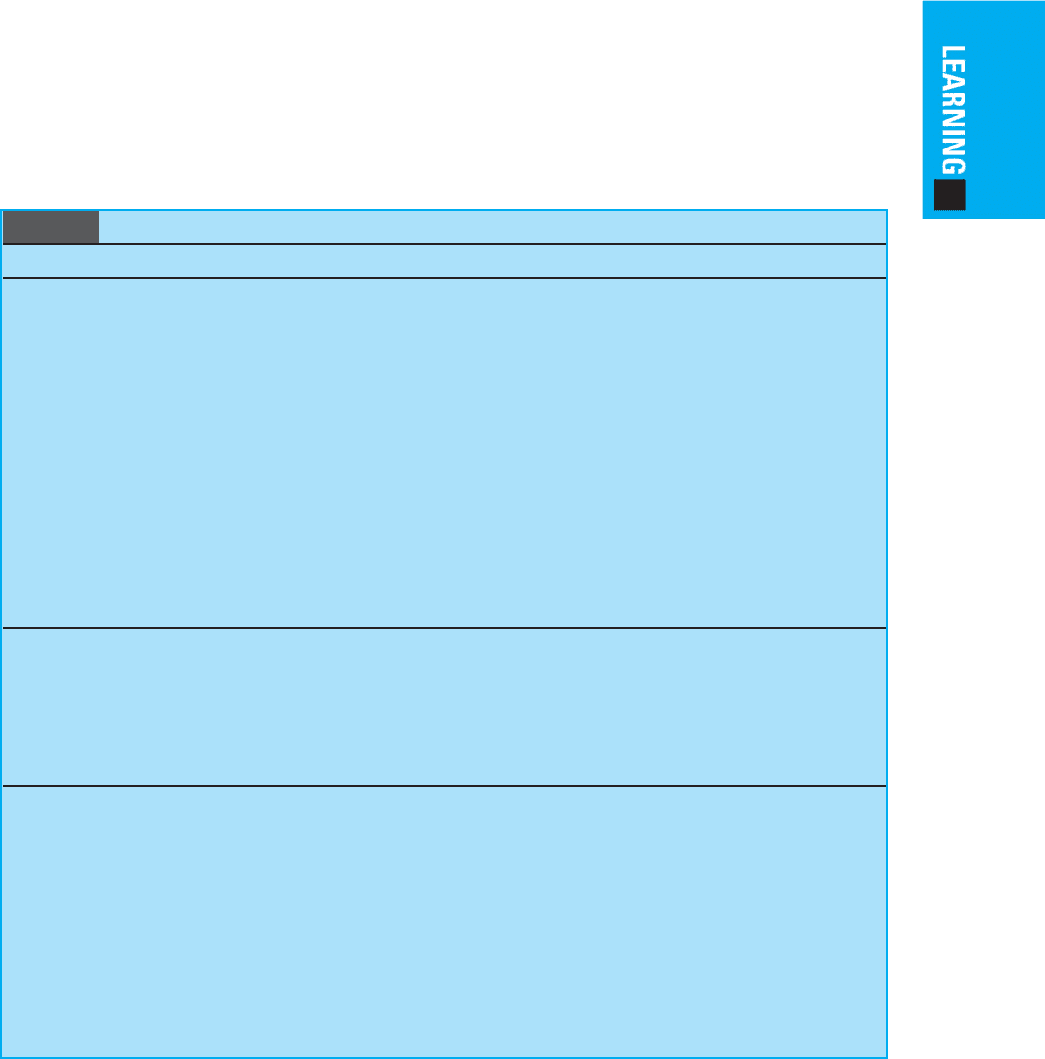
CONDUCTING INTERVIEWS SUPPLEMENT B 623
if you do not realize you have asked a leading question,
you will not know whether you are receiving a biased
answer, which can create a serious problem. Table B.2
offers ways to reword these three types of badly con-
structed questions.
Structure the Interview Using
Interviewing Aids
After determining the purpose and agenda, and after
formulating your questions, the next step in preparing
for an interview is to develop a structure. To do this,
you need to think about three things: the interview
guide, the questioning sequence, and transitions. The
interview guide is an outline of the topics and
subtopics you want to cover, usually with specific
questions listed under each heading. In other words, it
is the finalized version of the agenda. Alternative inter-
view guide formats will be discussed later.
While you are constructing the interview guide,
you will also need to be concerned with the sequence
of questions; that is, how they will interconnect.
The two most common types of question sequences
are the funnel sequence and the inverted funnel
sequence.
The funnel sequence begins with general questions
and then moves toward increasingly specific questions.
The inverted funnel sequence reverses this order,
Table B.2 Rewording Badly Constructed Questions
DOUBLE-BARRELED QUESTION PROBLEM BETTER QUESTION
1. If there’s anything that would The question ignores the reason Why do you want to leave our
make you stay, what would it be? behind the interviewee’s decision organization? (Let interviewee
and implies it can be changed. respond.) Is there anything I can do
to change your mind?
2. If you had no choice but to use The question avoids an open analysis What do you feel are the benefits of
this system, how would you use it of the system and forces the this system? (Let interviewee
productively? interviewee to defend it. respond.) What do you feel are the
disadvantages of this system?
3. Why should we adopt this The question raises a suspicion Do you think we should adopt this
insurance plan when none of our something is wrong with the plan insurance? (Let interviewee
competitors has adopted it? and urges the interviewee to put the respond.) Do you think it offers
suspicion to rest rather than to us new benefits? (Let interviewee
evaluate the plan. respond.) Have any of our
competitors adopted it?
FALSE BIPOLAR QUESTION PROBLEM BETTER QUESTION
1. Do you prefer working with The question assumes there are Do you work well with other people?
people or working alone? only two possible choices. (Can be followed with appropriate
probe.)
2. Do you approve or disapprove of The question assumes there are What are your feelings concerning
the union contract? only two ways to view the issue. the union contract?
LEADING QUESTION PROBLEM BETTER QUESTION
1. Don’t you think using this The question identifies the expected Do you think this plan will be useful
plan will alleviate the problems answer, making it difficult for the in alleviating the problems we’ve
we’ve been having? interviewee to disagree. been having?
2. Are you in favor of this policy The question places interviewee in What is your attitude toward this
like all your coworkers? the position of siding with the policy?
“right” side.
3. Of course, you want the best for The question associates response This product offers you some real
your family, don’t you? with a desirable goal (getting the advantages. Could I take some of
best for the family), making it your time to tell you about them?
difficult for the interviewee to
say no.

624 SUPPLEMENT B CONDUCTING INTERVIEWS
Table B.3 Funnel and Inverted Funnel Question Sequences
Funnel: From General to Specific
How do you feel about the new regulations concerning smoking in the building?
Are these regulations fair?
How are these regulations curtailing smoking among employees?
Inverted Funnel: From Specific to General
How are the new smoking regulations curtailing smoking among employees?
Do you think these regulations are fair?
In general, how do you feel about these new regulations?
Use the funnel sequence when:
• You want to discover the interviewee’s frame of reference.
• You want to avoid leading the interviewee.
• You want to maximize your ability to probe issues.
• The interviewee is willing to talk about the issues.
Use the interverted funnel sequence when:
• You want to get at specific facts before general reactions.
• You want to motivate a reluctant interviewee.
• You want to jog the interviewee’s memory.
Source: Adapted from Downs et al., 1980.
beginning with specific questions and moving toward
more open questions toward the end. Table B.3 shows
examples of these two sequences. Your choice of which
sequence to use depends on what you want to accom-
plish in the interview. Table B.3 also summarizes when
you should use each of these sequences, depending on
your goals.
After establishing the sequence of your questions,
you should consider what kinds of transitions you can
use to help the interviewee follow along. The transi-
tions in an interview perform the same function as
transitions in an oral presentation: They help listeners
maintain focus and keep them aware of where the
speaker is in terms of the overall organization.
Transitions are difficult to prepare ahead in unstruc-
tured interviews, yet a good interviewer will keep in
mind transitions should be used when a topic change
occurs. A simple statement such as, “I see what you’re
saying about that situation. Do you think you could
help me with another issue?” allows you to move from
one topic into the next. You may also use a brief sum-
mary of the interviewee’s responses to wrap up one
topic before moving to the next one.
Plan the Setting to Enhance Rapport
The interview location can have a major impact on the
interview atmosphere and interview outcome. If you
hold the interview in your office or an organizational
meeting room, you will create a formal atmosphere.
On the other hand, if you conduct the interview in a
more neutral area, such as a restaurant, the climate
will be more relaxed. The choice of setting depends on
your goals for the interview. The most important point
to remember about the setting is that, if at all possible,
you should try to hold the interview in a setting that
will be conducive to encouraging the kind of commu-
nication you seek.
Anticipate Problems and
Prepare Responses
As you prepare for an interview, you should consider
what kinds of problems you might encounter. Imagine
how the interviewee might respond to what you have
to ask, and prepare for his or her objections and ques-
tions. Consider the personality of the interviewee and
how you might have to adapt to either draw the person
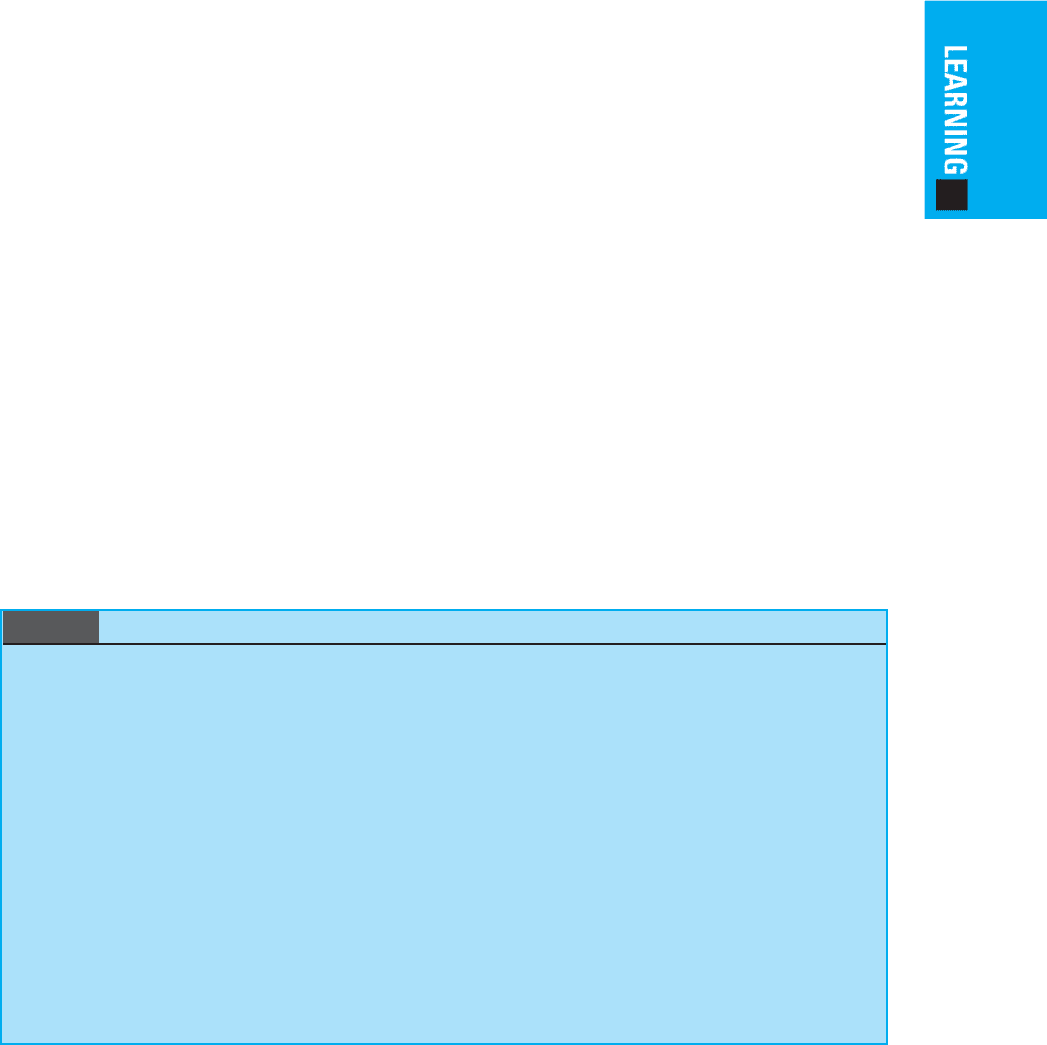
CONDUCTING INTERVIEWS SUPPLEMENT B 625
out or to control his or her tendency to dominate.
Anticipate how much time you will need to ask your
questions and how much time your interviewee has to
give you. Each interview will offer unique problems. If
you can plan for some of these situations, you will be
able to handle them better during the actual interview
than if you had not considered them at all.
Table B.4 provides a checklist for helping prepare
for an interview.
CONDUCTING THE INTERVIEW
Couple thorough preparation with sensitive implemen-
tation. Because an interview is an interpersonal
communication situation, in this section we will first
briefly review the concept of supportive communica-
tion as it applies to interviews. Then we will look at
the three stages of the interview—the introduction,
body, and conclusion—and discuss the functions of
each. We will offer suggestions for developing the
necessary skills to conduct an interview effectively.
Finally, we will discuss ways of recording the inter-
view information.
Establish and Maintain a Supportive
Communication Climate
The climate of the interview refers to the tone of
the interview and the general atmosphere in which
the interview occurs. An interview, like any other
interpersonal communication event, should be a
supportive interaction, one in which participants feel
free to communicate accurately. As the interviewer,
you set the climate of the interview in the introduction
when you begin to build rapport with the interviewee.
In general, you should seek to build a comfortable,
open climate, free of incongruence. Maintaining a sup-
portive and productive climate requires you constantly
analyze and adapt to the interaction as it occurs. When
you sense the climate is no longer supportive, move
away from the content level of the interview and
address the relational level. Consider this excerpt from
an information-gathering interview:
INTERVIEWER: Thanks for taking the
time to speak with me today.
INTERVIEWEE: Oh, it’s no problem at all.
What can I do for you?
INTERVIEWER: Well, I was wondering if
you could tell me a little about the incident
that occurred on the shop floor last week. First,
do you have any idea how it started?
INTERVIEWEE: No, not really. I was
doing my job and then, all of a sudden, the two
of them were at it.
INTERVIEWER: I see. You didn’t hear
them talking before they began to fight?
INTERVIEWEE: No. Like I said, it seemed
to start out of the blue.
INTERVIEWER: Weren’t you paying
attention?
INTERVIEWEE: How was I to know they
were going to fight?!
Table B.4 Interview Preparation Checklist
1. Have I determined my general purpose?
2. Have I written out my specific purposes and agenda?
a. Do I know exactly what I want to accomplish in terms of content?
b. Do I know exactly what I want to accomplish in terms of the relationship with the interviewee?
3. Do my questions all relate to my purposes and agenda?
4. Are my questions clearly worded in language the interviewee can understand?
5. Are my questions worded in an unbiased manner?
6. Have I chosen an appropriate interview structure for the situation?
7. Have I chosen an appropriate question sequence for the interview situation?
8. Have I developed potential transitions to be used in the interview?
9. Have I chosen a physical setting suited to the topics and the interviewee?
10. Have I planned ways to deal with problems that could develop during the interview?
626 SUPPLEMENT B CONDUCTING INTERVIEWS
By now, the questions are obviously beginning to
irritate the interviewee. The interviewer has contin-
ued to probe an issue that the interviewee seems to
think has already been covered sufficiently. The inter-
viewer should move away from this one point and
attempt to ease the interviewee’s discomfort before
continuing.
INTERVIEWER: You’re right. You really
weren’t in a position to anticipate this situation.
Perhaps, though, you could describe to me what
happened after the fight.
At this point, the interviewee may be hesitant to
disclose fully. The interviewer may have to continue
to strengthen relational support until the interviewee
appears to be comfortable in answering the questions.
A supportive climate is not maintained solely by
verbal behaviors. Listening analytically is also essential
to maintaining the climate of an interview. If you do
not show you are listening and responding to what the
interviewee is saying, he or she will not want to con-
tinue talking with you. In general, you should listen for
comprehension of the content of the interview, for
empathy with the interviewee, and for evaluation of
information and feelings (Stewart & Cash, 1985).
Introduce the Interview
Supportive communication begins immediately in the
introduction, where you establish the tone and set
the climate of the interview. You should greet the
interviewee in such a way as to build positive rapport.
The impressions created in the initial minutes of an
interview are crucial to its success (Stewart & Cash,
1985). Therefore, you should try to convey as favor-
able an impression as possible. After the greeting, you
need to motivate the interviewee to participate will-
ingly in the interview. Some common ways of doing
this are to ask for the interviewee’s help or tell the
interviewee why he or she was chosen as a source of
information. Finally, the introduction should contain
an orientation to the total interview. You should tell an
interviewee: (1) the purpose of the interview, (2) how
he or she will help meet that purpose, and (3) how the
information obtained during the interview will be
used. The introduction should end with a transition
into the body of the interview. Using a transition state-
ment, such as, “Now then, let me begin by asking . . . ”
or “Now that you understand what’s going to happen
during the next few minutes, let’s move on to the
questions” tells the interviewee the “real” interview is
about to begin.
Conduct the Body of the Interview
Generally, the body of the interview will follow your
interview guide, which is a predetermined sequence of
questions. There are three types of guides: structured,
semistructured, and unstructured. If the interview
guide is structured, you will simply read the questions
on the guide and record the interviewee’s answers. A
semistructured guide lists several recommended ques-
tions under each topic. The interviewer then selects
the most appropriate questions for a specific candidate.
A sample interview guide for a semistructured employ-
ment interview is shown in Table B.5.
If the interview guide is unstructured, then you will
use the guide only as an agenda. For example, an
unstructured interview guide for a termination interview
might simply list a few general topics for discussion, for
example, “What did he or she like and dislike about the
work and the company?” “Why is he or she leaving?”
“Any suggestions for improvement?” Particularly in
an unstructured interview, an interviewee will need
encouragement to answer your questions as fully as
possible. In order to encourage complete answers, you
will need to follow his or her initial responses with prob-
ing questions. Probing well depends directly on your
ability to listen well and analyze the content and rela-
tional information the interviewee offers you. Probing
questions are rarely planned ahead because you cannot
predict how the interviewee will respond to your ques-
tions. You will want to probe when you feel that, for
whatever reason, you are receiving an inadequate
response to your question.
The kind of probing you do will depend on the
responses given by your interviewee and the kind of
information you are looking for. If you feel the
response is superficial or inadequate due to lack of
information, you should use an elaboration probe,
such as:
❏ “Tell me more about that issue.”
❏ “Why do you suppose it happened that way?”
❏ “Was there anything else going on at the time?”
If you need to clarify the information given by the
interviewee, use a clarification probe, such as:
❏ “What does job satisfaction mean to you?”
❏ “You said you are unhappy with this policy.
Can you tell me specifically what aspects make
you feel this way?”
❏ “Earlier you mentioned you enjoyed working
with people. Can you provide a specific
example?”
